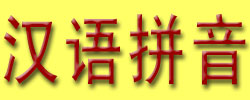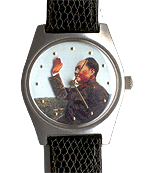| |
|
|
|
|
| |
Form and Style |
| |
- MARGINS: 1"
- LINE SPACING: 2
- FONT: Preferably Times or Arial/Helvetica
- FONT SIZE: 12 points
- NUMBER ALL PAGES, regardless of essay length
- TITLES: All papers must have a title, preferably a brilliant one. Titles like "Essay question #1" are not brilliant. For more, click here.
- CITATIONS: Use them! And use Chicago style, too. For more information, click here.
- PROOFREAD & EDIT: form and style count. Nine times out of ten, a polished paper is a good paper. For examples of blemishes, click here.
|
| |
 |
Romanization |
| |
- All papers should use Pinyin Romanization.
- In directly quoted passages, you may either leave the original Romanization or convert it to Pinyin.
- For more on pinyin and romanization in general, click here.
|
| |
Tardiness |
|
| |
- Short Papers will be docked half a point for each day late.
- The Midterm Essay and Video project will be docked one point for each day late.
- Note that these penalties affect your semester average by the same amount.
- Quizzes take place at the beginning of class. Students who miss them on account of tardiness will be considered absent -- i.e. not allowed to make them up.
- If you are going to hand in a paper late, make sure to send me an electronic copy. The time-stamp on the e-mail to which it is attachedwill be the basis for assessing the late fee.
|
| |
- For essays and assignments in this course, you have two choices of citation style. If you wish to use parenthetical citations in your text [e.g. (Author, date)], you may do so, but you MUST append a list of works cited to the essay in which all sources are listed according to the rules for bibliography. OR: you can use footnotes or endnotes in style given below, in which case a bibliography is not necessary.
- NOTE: Surnames come first in Chinese names. In terms of citation, this brings a special benefit: the name of a Chinese author is given the same way in both footnotes and bibliographies (see the examples of Mao Zedong and Li Dazhao below).
- If, however, a person with a Chinese name publishes in English, the standard format is used (see the example of Pei-kai Cheng below).
|
| |
| |
Foot- or Endnote: |
First name last name, Title (Place of publication: Publisher, date), page no(s). |
| |
example: |
Timothy Cheek, Mao Zedong and China's Revolutions: A Brief History with Documents (Boston: Bedford-St. Martins, 2002) pp. 15-20. |
| |
Bibliography: |
Last name, First name. Title. Place of publication: publisher, date. |
| |
example: |
Cheek, Timothy. Mao Zedong and China's Revolutions: A Brief History with Documents. Boston: Bedford-St. Martins, 2002. |
| |
| |
Foot- or Endnote: |
First name last name, “Article title,” Periodical title , volume.number (date), page no(s). |
| |
example: |
Joseph W. Esherick, "Ten Theses on the Chinese Revolution," Modern China, 21.1 (Jan. 1995), p. 51. |
| |
Bibliography: |
Last name, First name. “Article title”. Periodical title , volume.number (date), page no(s). |
| |
example: |
Esherick, Joseph W. "Ten Theses on the Chinese Revolution." Modern China, 21.1 (Jan. 1995), pp. 45-76. |
| |
| |
Foot- or Endnote: |
First name last name [if applicable],“Chapter/document/article title,” trans. [if applicable] in first name last name, ed., Book Title (Place of Publication: publisher, date), page no(s). |
| |
example: |
Mao Zedong, "Report on the Peasant Movement in Hunan," in Timothy Cheek, ed., Mao Zedong and China's Revolutions: A Brief History with Documents (Boston: Bedford-St. Martins, 2002) pp. 41-75. |
| |
example: |
Li Dazhao, "The Victory of Bolshevism," trans. in Pei-kai Cheng and Michael Lestz, eds., The Search for Modern China: A Documentary Collections (New York: Norton, 1999), pp. 238-241. |
| |
Bibliography: |
Last name, first name [if applicable]. “Chapter/document/article title.” In Book title , ed. First name last name, page nos. Place of publication: Publisher, year. |
| |
example: |
Mao Zedong. "Report on the Peasant Movement in Hunan." In Mao Zedong and China's Revolutions: A Brief History with Documents, ed. Timothy Cheek, pp. 41-75. Boston: Bedford-St. Martins, 2002. |
| |
|
Li Dazhao. "The Victory of Bolshevism." Translated in The Search for Modern China: A Documentary Collection, eds. Pei-kai Cheng and Michael Lestz, pp. 238-241. New York: Norton, 1999. |
| |
|
|
| |
There have been several systems for rendering Chinese words into Roman letters in the centuries since Western contact with China began. By the early twentieth century, the standard that emerged was the Wade-Giles system, which is used in several of your texts and was used by the Library of Congress and most U.S. libraries to catalogue Chinese books until very recently. In the 1930s, the Hanyu Pinyin (“Chinese phonetic transcription”) system was developed in Soviet East Asia, and was adopted with some modifications by the People's Republic of China in the 1950s. When the United States normalized relations with China in 1979, the New York Times adopted pinyin as its standard, and since then all media organizations have followed suit. In the 1990s, the Library of Congress began changing its Wade-Giles records to pinyin, as have most other American libraries. |

Herbert A. Giles
|
| |
In general, older books about China (and even, on occasion, new ones by crotchety old scholars) employ the Wade-Giles system. A loose rule of thumb is that if it was published before the 1980s, it will use Wade-Giles; if after, it will use pinyin. Unfortunately, if you have any interest in reading about China, you have to get used to both. For a Pinyin to Wade-Giles conversion chart, click: A to Mian | Miao to Zuo |
| |
By the end of this course, I expect you to be familiar with both systems. Furthermore, Pinyin is the required form of Romanization for all your papers . The People's Republic, the New York Times and the Library of Congress all use it; you should too. |
| |
|
|
 |
# |
Agreement. Your subject and verb do not agree on singular and plural. |
| |
|
|
 |
aspect |
Continuous Aspect. You have used the continuous aspect (I am reading) where the simple aspect (I read) is more appropriate. E.g. I am eating right now, but then I always eat at six. |
| |
|
|
 |
awk |
Awkward. While what you have written is not technically incorrect, it is unwieldy or strangely worded, making it difficult to understand. Overuse of the passive voice often leads to awkward constructions |
| |
|
|
 |
bold |
Boldface. Use boldface type for the words under which the curved line appears. |
| |
|
|
 |
capitalize |
Capitalize. Capitalize the letter under which three horizontal lines appear |
| |
|
|
 |
cite |
Cite. You need to either use a citation at this point in the text, or your citation style is incorrect. |
| |
|
|
 |
close |
Close space. There should be no space between the words connected by the curved lines. |
| |
|
|
 |
const |
Construction. The sentence construction is compromised by poor grammar or questionable style. |
| |
|
|
 |
cont |
Contraction. Essay writing is formal...avoid the use of contractions. |
| |
|
|
 |
delete |
Delete. Delete the marked words or letters. |
| |
|
|
 |
frag |
Fragment. The sentence is grammatically incomplete, lacking a subject, predicate, or both. |
| |
|
|
 |
gr |
Grammar. Marks a grammatical mistake. |
| |
|
|
 |
hyphenate |
Hyphenate. The words joined by the equal sign should be hyphenated. If you are unsure if words should be hyphenated, look them up. Use hyphens after adjectives in compounds to avoid confusion. E.g., "a fast moving van" is acceptable if you are describing a moving van that is fast. If you mean a van that is moving fast at the moment, use "fast-moving van." |
| |
|
|
 |
inf |
Informal. You have used a phrase or construction that is too informal for academic writing. |
| |
|
|
 |
insert |
Insert. The letters or words written above your text should should be inserted at the insertion point. Punctuation to be inserted will appear below the insertion point. |
| |
|
|
 |
insert space |
Insert Space. There should be a space where the vertical line appears. |
| |
|
|
 |
italicize or underline |
Italicize. Italicize foreign words that are not commonly used in English. Italicize or underline titles of books and other written works. |
| |
|
|
 |
no abbreviation |
No Abbreviation. Do not abbreviate the circled word(s). Spell out numbers one to ninety-nine, and any whole number preceding the words hundred, thousand, million, etc. |
| |
|
|
 |
no caps |
No Capitalization. Do not capitalize the letter with a slash. |
| |
|
|
 |
no underline |
No Underline. Remove the underline |
| |
|
|
 |
paragraph |
Paragraph. A new paragraph should begin at the symbol. Avoid long paragraphs...especially those longer than a page. |
| |
|
|
 |
run-on |
Run-on Sentence. The sentence marked contains more than one complete sentence. Often a period may be inserted or a comma changed to a period, though sometimes a run-on consists of a fragment grafted to another sentence. |
| |
|
|
 |
sp |
Spelling. Spelling error. |
| |
|
|
 |
tense |
Error in Verb Tense. Use tense consistently in essay writing. For history essays, the simple past is usually sufficient. |
| |
|
|
 |
transpose |
Transpose. The letters signified by the drawn line should be reversed. |
| |
|
|
 |
transpose |
Transpose. The words signified by the drawn line should be reversed. |
| |
|
|
 |
unc |
Unclear. The point or meaning of the you are trying to make is unclear to your reader. |
| |
|
|
 |
usage |
Usage. The word has been used incorrectly |
| |
|
|
 |
wc |
Word Choice. Sgnifies that while your use of the word is not technically incorrect, it is not quite appropriate either. Often a question of style. |
| |
|
|




